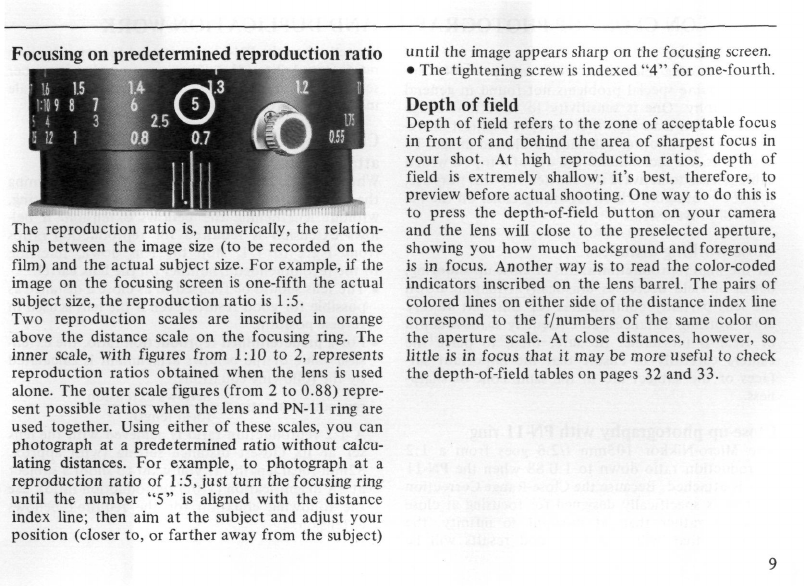
Focusing on predetermined reproduction ratio
The reproduction ratio is, numerically, the relation-
ship between the image size (to be recorded on the
film) and the actual subject size. For example, if the
image on the focusing screen is one-fifth the actual
subject size, the reproduction ratio is 1:5.
Two reproduction scales are inscribed in orange
above the distance scale on the focusing ring. The
inner scale, with figures from 1:10 to 2, represents
reproduction ratios obtained when the lens is used
alone. The outer scale figures (from 2 to 0.88) repre-
sent possible ratios when the lens and PN-11 ring are
used together. Using either of these scales, you can
photograph at a predetermined ratio without calcu-
lating distances. For example, to photograph at a
reproduction ratio of 1:5, just turn the focusing ring
until the number "5" is aligned with the distance
index line; then aim at the subject and adjust your
position (closer to, or farther away from the subject)
until the image appears sharp on the focusing screen.
• The tightening screw is indexed "4" for one-fourth.
Depth of field
Depth of field refers to the zone of acceptable focus
in front of and behind the area of sharpest focus in
your shot. At high reproduction ratios, depth of
field is extremely shallow; it's best, therefore, to
preview before actual shooting. One way to do this is
to press the depth-of-field button on your camera
and the lens will close to the preselected aperture,
showing you how much background and foreground
is in focus. Another way is to read the color-coded
indicators inscribed on the lens barrel. The pairs of
colored lines on either side of the distance index line
correspond to the f/numbers of the same color on
the aperture scale. At close distances, however, so
little is in focus that it may be more useful to check
the depth-of-field tables on pages 32 and 33.
9


















